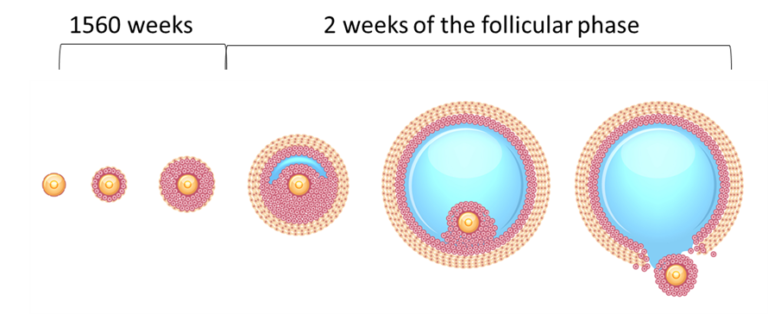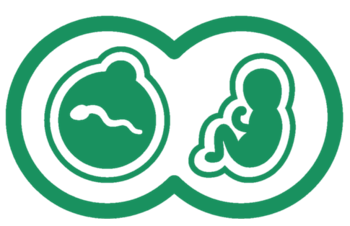Term Stimulation™ Expectations
If Term Stimulation™ is confirmed to improve oocyte quality, it will shift IVF paradigm from “more embryos and better selection” to “more better embryos and better selection”.
Every female has a unique ratio of viable and non-viable oocytes in her ovaries. The viable oocyte is the one, which has the potential to become a child once fertilized and implanted. Some women have nearly every oocyte that is viable, but majority do not. Every month a woman ovulates a single oocyte from a single follicle, which is called a dominant follicle. This follicle may or may not contain a viable oocyte. As we discuss elsewhere, this is because there is no correlation between follicle size and oocyte quality.
If for example, a woman has only 10% of her follicles containing a viable oocyte, since those follicles are recruited into the ovarian cycle randomly, it may take 10 ovulatory cycles until a follicle containing a viable oocyte ovulates. By “ovulating” 10 eggs at once during an IVF cycle, we condense those 10 natural ovulatory cycles into one and then use extended culture and PGT to narrow down that viable egg. In other words, IVF works by a number and selection.
By incorporating Term Stimulation™ into IVF and other ART methods it may be possible to increase the percentage of oocytes that become viable by giving them additional time to reach term maturation.
Realistic Expectations
The duration of the follicular phase is not the only variable determining egg quality. There are many more and most of them we probably still do not know.

- Term Stimulation™ only affects 2 weeks of oocyte’s life
- Time is critical, but it must be “quality” time: i.e. too much FSH may recruit too many cells into mural granulose, leaving fewer granulose cells to nurse the egg
- Low level of growth factors synthesis may not recruit and retain an adequate number of granulose cells
- The proportion of potentially viable oocytes varies greatly from female to female
- Other unknown intrinsic oocyte factors
Another important point to consider is a wide variation for a normal duration of the follicular phase:
This can be interpreted as a vast variability in term maturation between females. The short follicular phase is not always in itself a sign of a problem and therefore extending it will not always improve egg quality.

